By Stephanie Namahoe Launiu
The history of Hawaii is more than just a collection of dates and events — it’s a living, breathing legacy that still affects everyday life across the islands.
Of all the moments in Hawaii’s past, one stands out as the most defining — and the most painful. It influences everything from land ownership to political movements, and it can even explain the quiet tension visitors sometimes feel but don’t quite understand.
Ever catch a sideways glance from a local and wonder what you did? That reaction may have less to do with you — and more with the unresolved scars of history.
Did you know? Hawai‘i was once a sovereign kingdom, overthrown by a group of American businessmen with the support of the U.S. government. The impact of that is still felt throughout the islands today.
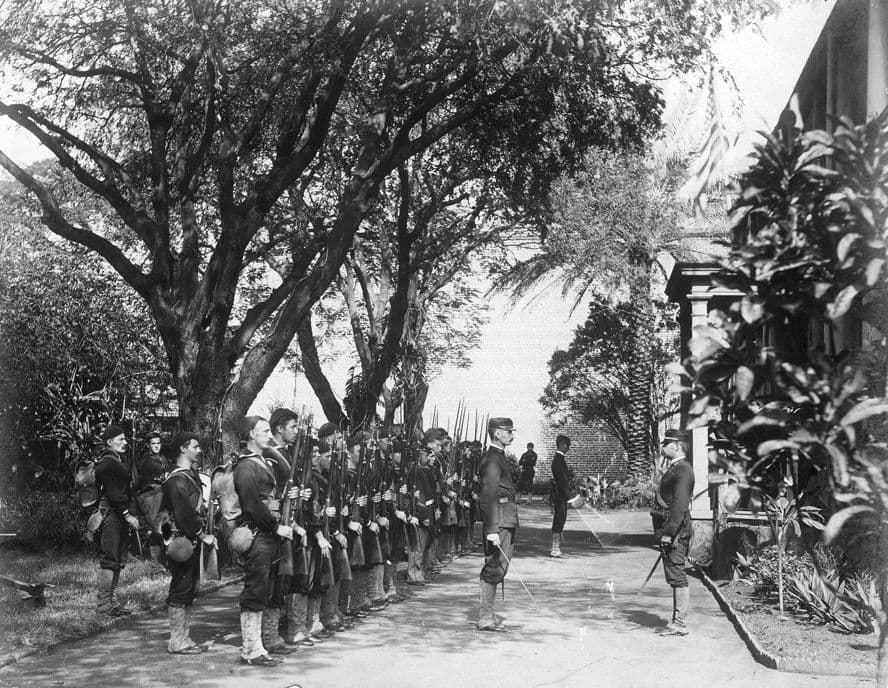
Soldiers from the USS Boston marched on ‘Iolani Palace. (Photo Credit: Hawai’i State Archives)
On January 17, 1893, the Hawaiian Kingdom was overthrown in an illegal coup d’état — one that would forever change the history of Hawai‘i.
U.S. Marines from the USS Boston, two companies of American sailors, and U.S. Minister John L. Stevens landed in Honolulu Harbor. Backed by U.S. and European businessmen, they orchestrated the removal of Queen Liliʻuokalani from power at ʻIolani Palace and placed her under house arrest. In the days that followed, the self-declared Committee of Safety established a provisional government and pushed to seize control of the islands. By 1894, the Republic of Hawai‘i was created.
What fueled their actions? Money. Political control. And above all, the islands’ profitable sugar industry.
At the helm was Sanford Dole — often called a “sugar baron.” His cousin, James Dole, known as the “pineapple king,” would later found the Hawaiian Pineapple Company, the forerunner of the globally recognized Dole Food Company.
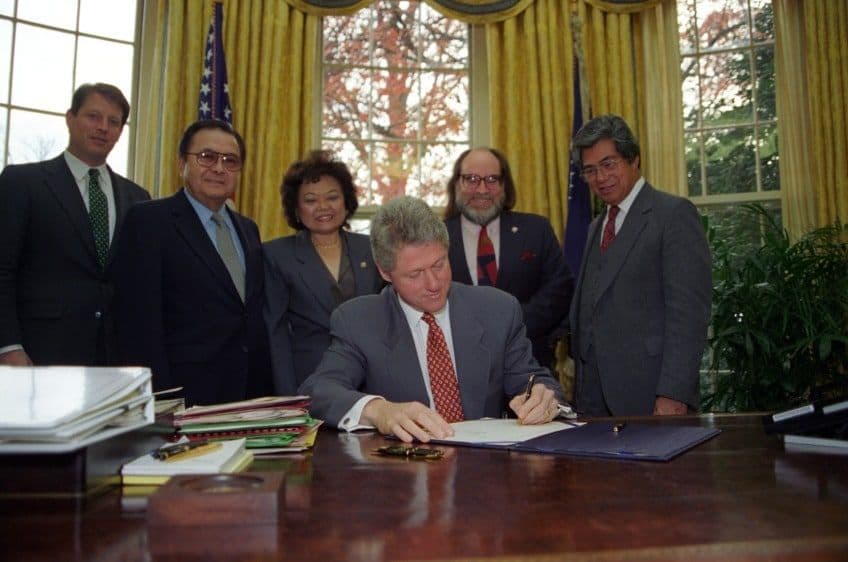
President Clinton signs an apology bill to Native Hawaiians in 1993. (Photo Credit: Clinton Presidential Library)
In 1993, President Bill Clinton issued a formal apology to Native Hawaiians. One hundred years after Queen Liliʻuokalani was deposed, President Bill Clinton signed Public Law 103-150, a joint resolution of Congress often referred to as the Apology Resolution. It was a landmark moment — an official recognition of historical injustice.
Among its key acknowledgments:
The overthrow was illegal: “Congress…on the occasion of the 100th anniversary of the illegal overthrow of the Kingdom of Hawaii…acknowledges the historical significance of this event which resulted in the suppression of the inherent sovereignty of the Native Hawaiian people.”
An official apology: The resolution issued a formal apology “…to Native Hawaiians on behalf of the people of the United States for the overthrow of the Kingdom of Hawaii on January 17, 1893.”
Open claims remain: Importantly, it clarifies, “Nothing in this Joint Resolution is intended to serve as a settlement of any claims against the United States.”
But here’s the hard truth: since that apology, little has been done to address or repair the harm. There’s been no restitution, no return of lands, and no significant movement toward sovereignty or self-governance. And that fact weighs heavily on both Native Hawaiians and residents.
This is a very good historical account from the U.S. government: Hawai‘i and the White House.
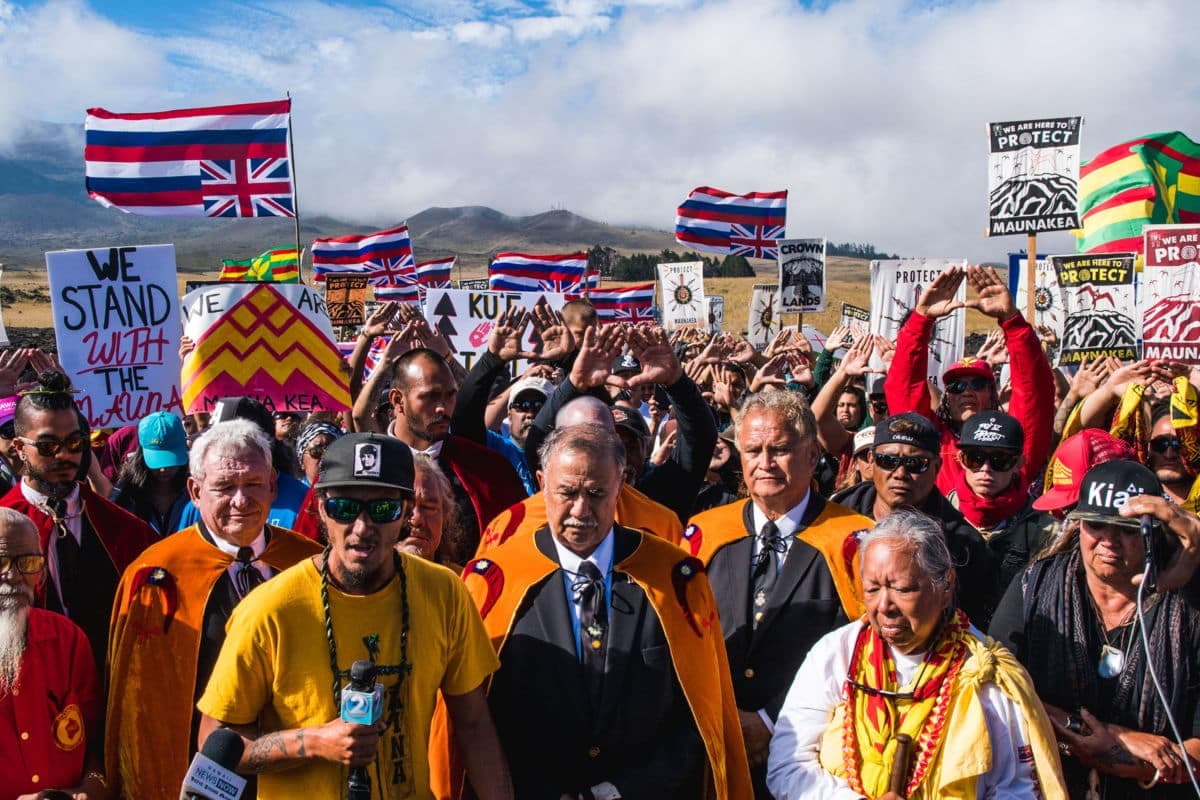
Thousands of Native Hawaiians gathered in protest on Mauna Kea. (Photo Credit: Pu’uhonua o Pu’uhuluhulu Maunakea)
“Native Hawaiian” is a U.S. government racial classification for the indigenous or aboriginal people — and their descendants — of the Hawaiian Islands. Known as Kanaka Maoli, their ancestors were the original Polynesians who sailed to Hawai‘i and settled the islands around the 5th century A.D.
Living in Hawai‘i or loving the culture doesn’t make someone Hawaiian. It’s a deeply genealogical identity that connects people to ancestors, to ʻāina (land), and to kuleana (responsibility). Over the years, Kanaka Maoli have faced immense challenges — especially during times like the Great Māhele in the mid-1800s. Many Native Hawaiians lost access to their ancestral lands, setting off a ripple effect that continues to impact families to this day.
The Kingdom of Hawai‘i was not just a sovereign nation — it was an internationally recognized monarchy. Throughout the 19th century, the Hawaiian Kingdom established formal diplomatic and trade relationships with major global powers. It entered into bilateral treaties of friendship, commerce, and navigation with nations around the world, affirming its place in the international community.
Some of the countries that signed treaties with Hawai‘i include: the United States (1826), Great Britain (1836), France (1839), Denmark (1846), Hamburg (1848), Sweden and Norway (1852), Tahiti (1853), Bremen (1854), Belgium and the Netherlands (1862), Italy and Spain (1863), Swiss Confederation (1864), Russia (1869), Japan (1871), New South Wales (1874), Portugal (1882), Hong Kong (1884), and Samoa (1887).
The first recorded Western contact with Hawai‘i occurred in 1778, when Captain James Cook, commissioned by Great Britain, sailed the HMS Resolution into Waimea Bay on Kaua‘i. The following year, Captain Cook arrived at Kealakekua Bay on the Big Island. At the time, between 400,000 and one million Native Hawaiians lived across the islands.
Because Hawai‘i was so isolated, its people had no exposure —and no immunity — to many of the diseases circulating elsewhere. When Cook and his crew arrived, they brought with them a host of foreign illnesses, and within a century, the population plummeted by 90%, falling to around 40,000. A number of the “new” diseases proved fatal, including smallpox, measles, influenza, sexually transmitted infections, whooping cough, cholera, leprosy, and even the common cold.
The arrival of Christian missionaries in the early 19th century drastically transformed Hawaiian society. Hawaiian women were pressured to wear “Mother Hubbards” — high-neck, long-sleeved muslin dresses that covered them from neck to ankle, despite the tropical climate. Alongside the change in dress came a dismantling of traditional spiritual beliefs, as Christian doctrines replaced traditional Hawaiian religion.
The native dance — hula — was outlawed. Underground hula schools emerged to keep the tradition alive. King David Kalākaua, known as the “Merrie Monarch,” actively revived Hawaiian dance and language during what became known as the first Hawaiian Renaissance.
As more foreigners arrived, towns were built to accommodate them. Bars, alcohol, opium dens, and prostitution became common. Native Hawaiians, once reliant on sustainable trade, had to adjust to a cash economy and earn an income.
Immigrants from China, Japan, and Portugal came to work on the newly formed sugar plantations. Different languages and cultures blended, reshaping Hawai‘i’s social fabric. Plantation owners, many of them missionaries or their descendants, needed more laborers because so many Native Hawaiians died from foreign diseases.

Military helicopter landing in Makua Valley, Oahu. (Photo Credit: Rep Kai Kahele)
Due to its strategic global position, Hawai‘i is home to all branches of the U.S. military — Army, Navy, Air Force, Marine Corps, Coast Guard, Space Command, and the U.S. Indo-Pacific Command, which oversees operations across Asia and the Pacific. On O‘ahu, the most densely populated island, 22% of all land is under military control. As a vital midpoint between the continental U.S. and East Asia, it is a key hub for training, coordination, and deployment.
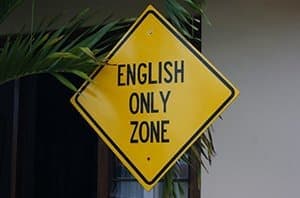
Only English language was allowed in public schools. (Photo Credit: Hawaiian Scribe)
Three years after the overthrow of the Hawaiian Kingdom, a law was passed making it illegal to teach any language other than English in public schools. This effectively banned Hawaiian from classrooms, replacing it with English in education, government, and business. Children were punished for speaking Hawaiian, and the language nearly disappeared. It took nearly a century — and a constitutional amendment in 1978 — before Hawaiian could legally be taught again. However, it wasn’t until 1987 that the language officially returned to public classrooms.
Discover how the Hawaiian language is being restored in homes.
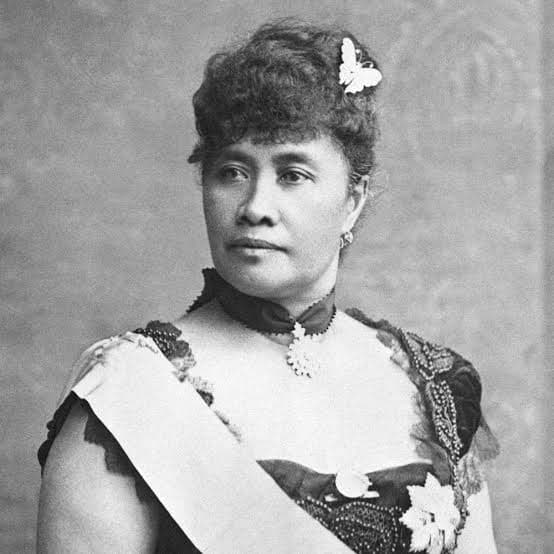
Queen Liliuokalani was never compensated for her land taken by the U.S. that is now considered state and federal land. (Photo Credit: Hawai’i State Archives)
Native Hawaiians organized a massive grassroots campaign known as the Kūʻē Petition opposing annexation. They collected 21,269 signatures — more than half of the Native Hawaiian population at the time. Queen Liliʻuokalani traveled to Washington, D.C., to protest and deliver the petition herself. Despite the overwhelming support and her presence, Congress failed to act. The following year, the U.S. formally annexed Hawai‘i without a public vote.
President Grover Cleveland publicly acknowledged that the overthrow was illegal, calling it “a grievous wrong.” He attempted to restore the Hawaiian monarchy and turned the issue over to Congress. Meanwhile, the illegal interim government in Hawai‘i continued to strengthen its hold over the islands with Sanford Dole president of the provisional government.
In 1920, a protectionist World War I shipping law called the Jones Act went into effect. Any cargo traveling between two U.S. ports must be on vessels that are U.S.-built, U.S.-owned, and crewed by U.S. citizens. This makes goods in Hawai‘i, Alaska, Guam, and Puerto Rico 40% more expensive than the mainland, on average, because it disallows foreign competition. Hawai’i is the only state with no land access to the continental United States.
Discover why the Jones Act was bad for Hawaii’s economy.
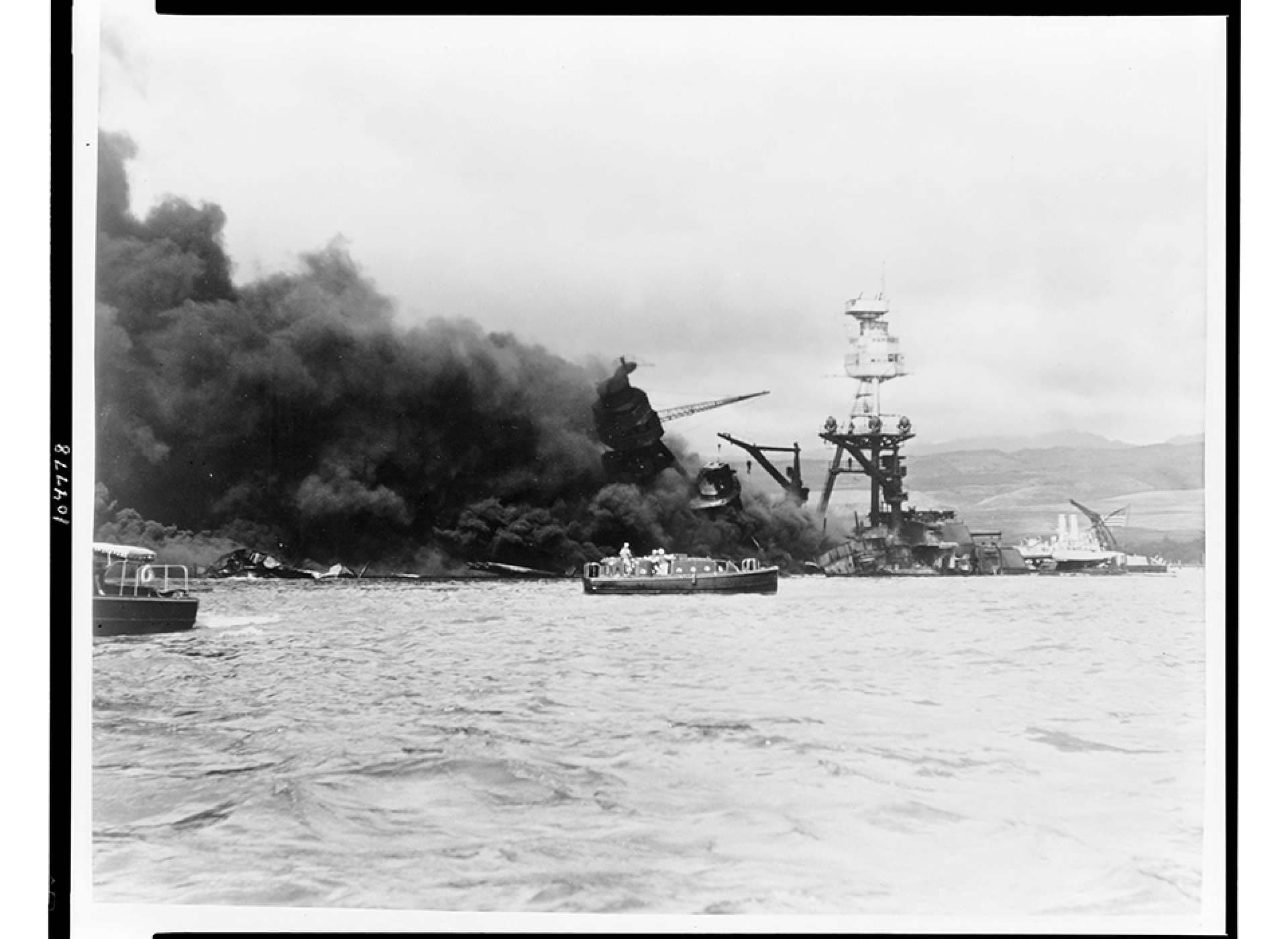
Pearl Harbor bombing 1941. (Photo Credit: Hawai’i State Archives)
On December 7, 1941, Japanese forces attacked Pearl Harbor, ushering America into World War II. In the wake of the bombing, Hawai‘i was placed under martial law. Civil rights were suspended, and more than 2,000 people were arrested in the first two days. Japanese Americans in Hawai‘i faced discrimination, with many detained or forced to relocate. The military ran the islands, eliminating jury trials and habeas corpus for nearly three years.
For nearly five decades, the U.S. Navy used Kahoʻolawe — a small, sacred island just seven miles from Maui — as a bomb range, rendering it uninhabitable. In the 1970s and 1980s, Native Hawaiian activists mounted passionate protests to stop the destruction. Their efforts finally paid off in 1990, when President George H.W. Bush ended military use of the island and placed it in the care of a Native Hawaiian trust. To this day, restoration is ongoing, and unexploded ordnance remains a concern.
Explore more about Kaho’olawe today.
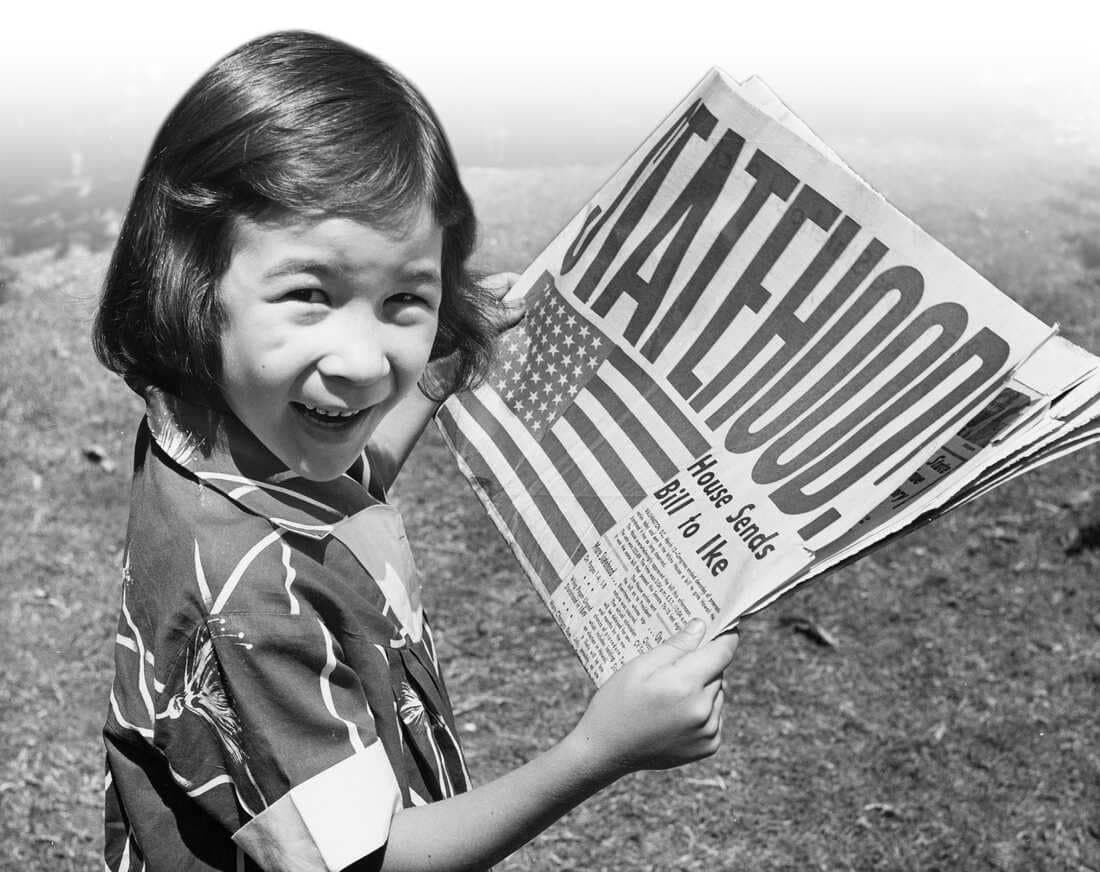
For the most part, Statehood was celebrated in Hawaii (Photo Credit: NPR)
Hawai‘i officially became a U.S. state in 1959, following a vote that offered no option for independence or a return to monarchy. At that time, Native Hawaiians were already a minority in their own homeland, and tourism was on the rise as the dominant economic force. While statehood was celebrated by many, it did not come with any form of restitution. The legacy of this decision still shapes Hawai‘i’s cultural and political views today.
Despite all that Hawai‘i has endured, its people remain among the friendliest — welcoming visitors with warm hearts and genuine smiles. Travelers are encouraged to support the islands’ by shopping locally, respecting Hawaiian culture, and engaging with the community. Rather than simply consuming the scenery, meaningful experiences come from connecting with the people and traditions that make Hawai‘i truly unique.
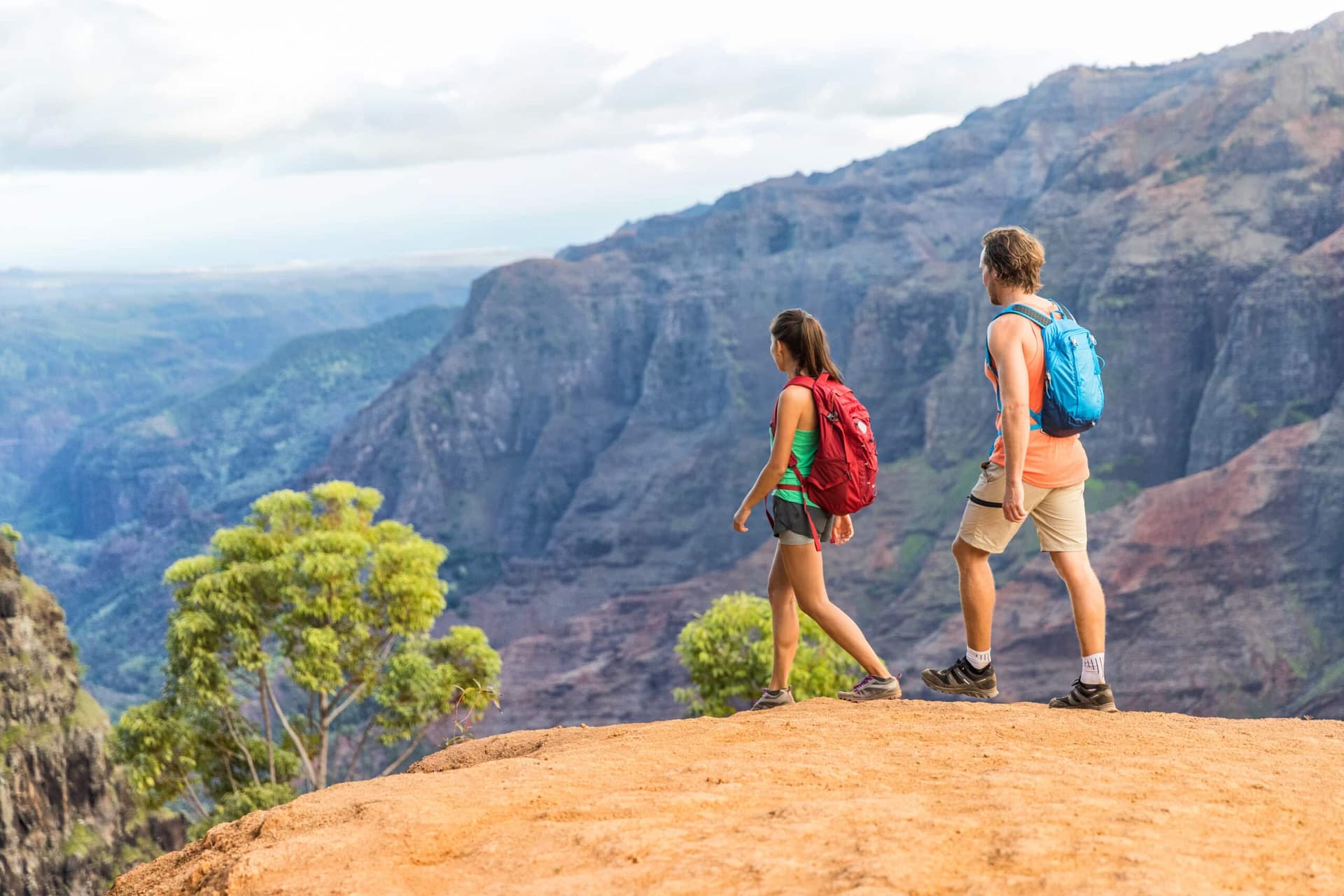
Hike in Waimea Canyon State Park (Shutterstock)
Learn about the history of Hawai‘i – Understanding the islands’ complex past — including colonization by the U.S. and the ongoing Hawaiian sovereignty movement — adds depth to your visit and acknowledges the people.
Respect sacred sites – Cultural and spiritual sites are not tourist attractions — they’re places of deep significance. Avoid disturbing these areas, and never take sand or lava rocks home.
Dress conservatively when necessary – Avoid wearing shorts or revealing clothing inside cultural sites, and save swimsuits and bikinis for the beach.
Learn a few Hawaiian phrases – Simple greetings like “aloha” (hello/love) or “mahalo” (thank you) go a long way.
Engage with the culture and community – Attend local festivals, hula performances, and other cultural events, and take the time to connect with residents — respectful conversations can offer meaningful insight into Hawaiian life and values.
Support local businesses – Shop at markets, eat at family-owned restaurants, and choose Hawaiian-led tours to directly support the economy.
Practice responsible tourism – Leave no trace, stay on designated trails, avoid disturbing wildlife, and be mindful of resource use. Protecting Hawai‘i’s fragile ecosystems is essential to preserving its beauty and biodiversity.
Be respectful of customs and traditions — Follow local etiquette and approach your visit with humility and a willingness to learn. An interest in their complicated past is a great start!
Join our newsletter for travel inspiration, insider tips and the latest island stories.
By subscribing, you agree to receive emails from Hawaii.com. You can unsubscribe anytime. See our Privacy Policy.